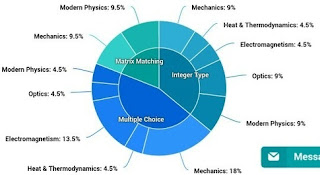The JEE Advanced 2015 paper was the toughest paper since the IIT JEE Paper of 2005 and tougher when compared with even the subjective papers of previous years.
The most coveted institute, IIT Bombay has indeed proved itself by setting a new standard to the JEE Advanced paper. It ensured that the changed objective pattern too can be employed to extract the best and most genuine cream of the IIT aspirants.
This time the total mark was a whopping wholesome of 504 (264 + 240) with a total of 120 questions (60 + 60). It is so clear that the paper had been lengthy.
Paper-1:
The format of the paper was among the toughest of all times, with no single correct questions and with high negative markings. Though the paper did contain solvable questions, the paper being lengthy hampered the students from scoring to their best.
Format:
8 Integer questions (Each of 4 marks and no negative marking);
10 Multi Correct questions (+4, - 2)
2 Matrix Match type questions (+2, - 1 for each option)
Physics:
The questions were easy. If carefully attempted, this part of the paper would have been the most scoring part of the entire exam.
The most coveted institute, IIT Bombay has indeed proved itself by setting a new standard to the JEE Advanced paper. It ensured that the changed objective pattern too can be employed to extract the best and most genuine cream of the IIT aspirants.
This time the total mark was a whopping wholesome of 504 (264 + 240) with a total of 120 questions (60 + 60). It is so clear that the paper had been lengthy.
Overall Review
- This time the paper was so designed to test the students' tricky problem solving skills, time managing attributes which includes the not-losing-confidence trait, and also their memory to a certain extent. The sustainers of this great feat by IIT Bombay, do have the IIT factor in them.
- The main drawbacks of the paper in the perspective of the students would be that the paper was lengthy as it did contain some tough and time consuming problems and the highly devastating format due to the heavy negative markings.
Paper-1:
The format of the paper was among the toughest of all times, with no single correct questions and with high negative markings. Though the paper did contain solvable questions, the paper being lengthy hampered the students from scoring to their best.
Format:
8 Integer questions (Each of 4 marks and no negative marking);
10 Multi Correct questions (+4, - 2)
2 Matrix Match type questions (+2, - 1 for each option)
Physics:
The questions were easy. If carefully attempted, this part of the paper would have been the most scoring part of the entire exam.
- Only 1 or at most 2 questions of the 8 Integer questions would have been tough to solve, the rest all being easy.
- Among the 10 Multi Correct MCQs, 4 questions were easy, 5 questions mediocre, and 1 question tough.
- Both the Matrix match type questions were a cakewalk, though one of them required a grip on the NCERT text.
- Chemistry:
It was a blend of both tough and easy questions. Reminding you, Chemistry is the subject requiring to use one's memory, around 3 questions required a good memory.- 6 Integer questions could have been answered easily, the other two being tough.
- The distribution of the Multi Correct MCQs was 5 easy, 3 mediocre and 2 tough.
- One matrix match type question was easy and another one could have been answered by carefully attempting it.


No comments:
Post a Comment